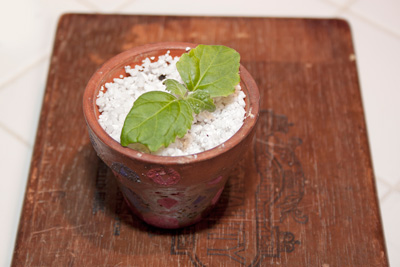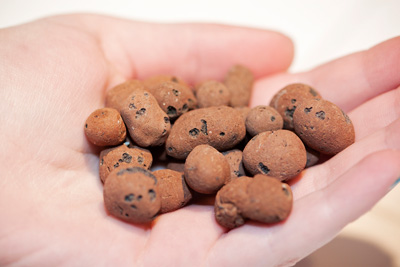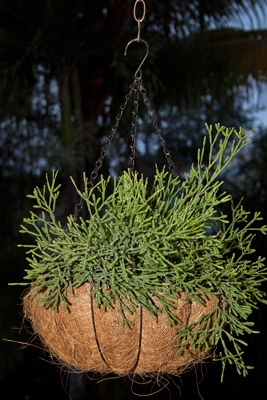As published in the Miami Herald, 6/21/14.
The texture of soil is as important as its fertility
I’m sure you have purchased potting soil that stated something like “contains perlite.” What exactly is that, and why should our soil contain any? Living in a region with a usually wonderful climate comes at a cost: nasty storms, torrid summers and really bad soil. It might not even be rightly called soil.
Whether you garden in pots or the ground, you will need to consider soil amendments. These amendments are not fertilizers, but rather additives intended to condition soil’s physical properties like texture — known as the soil’s edaphic conditions.
Other than some bog plants, most plants require soil that is loose enough for young roots to push through, holds onto moisture but drains enough to avoid becoming waterlogged. It also needs to be porous, with lots of air pockets for the millions of soil creatures the plants depend on, and so oxygen can reach plant roots.
It would appear these requirements are sometimes at odds, but there are ways to help out. Let’s go over some more common soil additives to find out how.
Perlite is the little white pebbles present in the soil of many potted plants you might have purchased. Perlite in its natural state is a volcanic rock that happens to have a high water content. It’s mined and crushed before being sent off to be further processed by heating. The heat causes water trapped inside the rock to boil and expand, thus exploding the perlite mineral into the tiny porous pebble-sized pieces we recognize.
Perlite’s original uses were focused in construction as an additive to concrete and plaster and as lightweight insulation. Popular Mechanics of 1954 related that perlite’s outstanding insulating properties provided better insulation in a smaller space, allowing for thinner walls and greater floor space. Certainly important, as I think we’d all agree with the author that “Space in a swanky office building doesn’t exactly rent for peppercorn.”
In addition to swanky building insulation, perlite has a more down-to-earth use. In horticulture, perlite helps keep soil aerated, inhibits soil from clumping and becoming compacted and helps the soil maintain a consistent moisture level — qualities that are especially desirable for potted plants.
In clay pots, I started seeds that germinated quickly but grew only a couple inches before dying. A quick soil necropsy — meaning I just dumped out the soil — revealed it to be clumped together in a solid, saturated clay-like mass. It was organically rich, but the seedling roots couldn’t penetrate it and were deprived of air. Perlite would have helped here.

Cuttings can be propagated in pure perlite. Kenneth Setzer/FTBG.
You can buy perlite in bags at any hardware store and just mix it into your potting soil by hand. Perlite can even completely replace soil for propagating plant cuttings. Place a cutting into some damp perlite and keep moist. When you see new leaves appear in a couple weeks, the cutting should be ready for soil.
Vermiculite has uses similar to perlite, but is often coarser. It’s an attractive mineral similar in appearance to mica. When heated it “exfoliates” into smaller pieces. In addition to keeping dense soil aerated, it has a large surface area that can carry and hold fertilizers as well as provide anchorage for roots. It also helps sandy soil hold onto nutrients that would otherwise be flushed away. And it’s ideal for storing bulbs and tubers; vermiculite will absorb any free moisture outside the bulb, without desiccating them.
Expanded clay aggregates are essentially clay spheres fired in a rotating kiln. They are rounded, very porous and range in size from a pea to a grape. They are used in hydroculture — growing plants without the use of soil — since they hold moisture, drain excess water quickly, discourage mold, anchor plants and are reusable.
Clay aggregates can be used as perlite would be to loosen soil, but on a larger scale. Mixed with organic matter, they are used in green roofs and rooftop gardens to supply a lightweight, strong and inert form of drainage and plant anchorage.

Expanded clay can maintain soil porosity on a large scale. Kenneth Setzer/FTBG.
A product called Growstones, made from recycled glass, claims also to increase soil porosity and aeration while reducing soil compaction. I have no experience with Growstones, but it’s interesting that they are made from recycled glass — garbage, essentially — and don’t require mining like perlite and vermiculite do.
Coconut coir fiber is another option. The fiber is extracted from between the inner and outer coats (the husk) of the coconut, sort of analogous to the white of a hardboiled egg nestled between the yolk and the shell. Anatomically, it’s the mesocarp.
Anyone who has tried to get to the edible parts of a coconut knows this fiber is tough. It’s still used in many parts of the world to make items like rope and floor mats. Often sold in compressed “bricks,” the shredded coir expands to many times its packaged size when water is added.
It can be used alone as a potting medium, but mixed with soil, it promotes the ideal condition of holding on to moisture while also draining well. Unlike other organic soil additives like peat or sphagnum moss (as opposed to mineral additives like perlite), coir takes its time decomposing. That’s because it is harvested from mature coconuts as “brown” coir, and contains more lignin and less cellulose than at its earlier stage. Lignin is much tougher for microbes to decompose than cellulose, and will therefore remain in your soil longer. It can also serve as a rich carbon source for composting. Very environmentally friendly!

Coconut coir can replace a pot entirely. Kenneth Setzer/FTBG.
There are many other amendments available to improve soil texture, like horticultural charcoal and gypsum, and some a bit more exotic, but using the more common amendments should allow you to create a soil mixture that meets all your plants’ needs.
